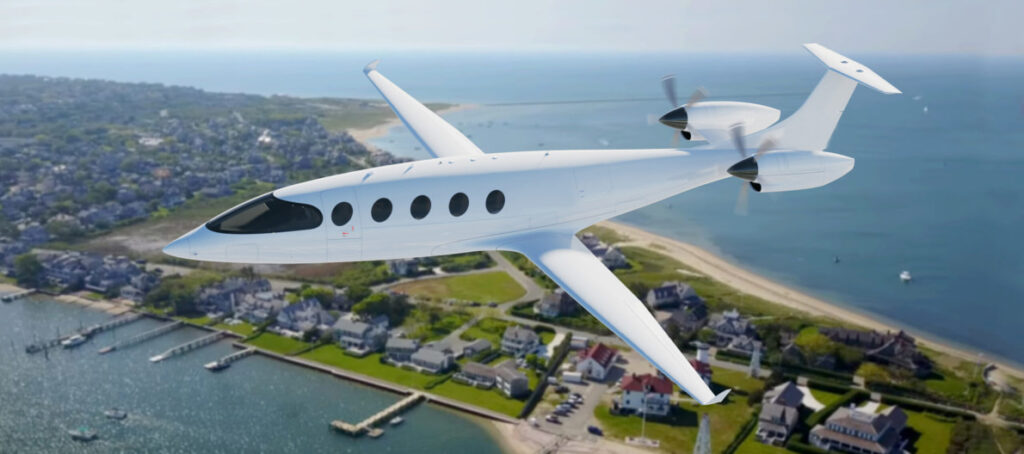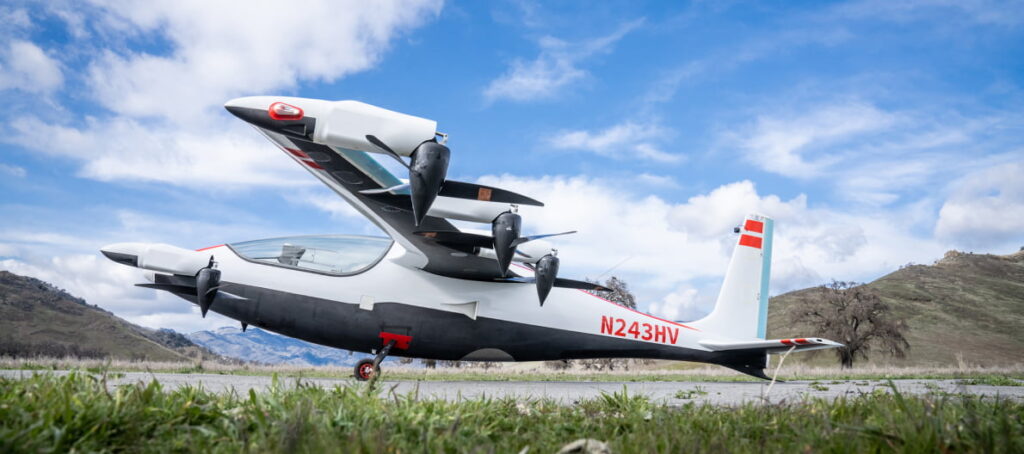There are more and more electric vehicles – almost all well-known automakers are creating vehicles that run on electricity. It seems that this trend can help the world and move technology forward. That’s why some companies are also considering the possibility of creating aircraft that can use not kerosene but all the same electricity. Indeed, in this way, a person receives quite a few advantages in the form of savings and good ecology.
In this article, Charter Jets, Inc. will share with you verified information about recent developments in the field of electric aircraft. We will consider all the advantages and disadvantages of the innovations created by various companies. We will also explain in detail the principles of their work and analyze their types. Moreover, you will learn how the flight on such an electric private aviation jet will look.

How do electric jet planes work?
Most electric planes run on lithium-ion batteries. But to fully understand how electric planes work, you need to understand their types. The term “electric aircraft” refers to an electrified aircraft. Aviation experts distinguish between three levels of aircraft electrification:
- “More electric.” This is an aircraft with increased electrification, which, like a conventional aircraft, is equipped with an internal combustion engine. The motor converts the chemical energy of the burning fuel into mechanical energy and creates thrust, a force that pushes it through the airflow. But most of the work of the equipment (wing adjustment, landing gear extension, and so on) is performed by electric drives. Such electric jets are powered by the power supply system and convert electrical energy into mechanical energy.
- “Fully electric.” This is an aircraft that does not have internal combustion engines, and all equipment runs on electricity. Batteries power electric motors to create thrust in such aircraft. In the early 2000s, a boom began in the creation of “fully electric aircraft,” with the main energy source being lithium-ion batteries. Using batteries as the primary energy sources limited the capabilities of aircraft – range, flight time, payload. Therefore, aviation experts began to consider alternative options for generating energy. Among them are solar panels and fuel cells, where hydrogen is most often used as fuel.
- “Hybrid”. This type of plane is equipped with a hybrid power plant. A hybrid engine consists of an electrical part (electric motor, generator, battery) and an internal combustion engine that uses chemical fuel. And if it is kerosene, it will be hydrogen in the future, which opens up excellent prospects for aviation technology developed using the “fully electric aircraft” technology.
What electric jet planes already exist or are under development?
Developers around the world are working on the creation of electric aircraft. To date, no electric jet airplanes would be used in everyday aviation. However, there are prototypes such as Extra 330LE aircraft, electric-powered Cessna Caravan 208B, and others. Developers around the world are working on the creation of electric aviation. We have collected examples of several successful projects.
- Startup Kitty Hawk – is a personal electric plane. In 2017, startup Kitty Hawk, invested in by Google co-founder Larry Page, revealed a prototype of Heaviside’s first private electric plane. A single-seat device can take off and land vertically; it needs a platform measuring approximately 10×10 m.
- Pipistrel – a two-seat electric aircraft. Pipistrel has introduced a two-seat electric plane Velis Electro, which has been certified by the European Aviation Safety Agency EASA. The device receives energy from two batteries, develops a speed of up to 181 km/h, and can stay in the air for up to 50 minutes.
- MagniX and AeroTEC – are the most prominent electric commercial airplane. In 2020, MagniX and AeroTEC tested the largest electric-powered Cessna Caravan 208B commercial aircraft. According to chief executive Roy Ganzarsky, the aircraft can carry 4-5 passengers for a distance of up to 160 km.
- Siemens – an electric aircraft with maximum speed. Siemens launched the Extra 330LE aircraft with a battery-powered electric motor. The device broke the record among analogs: during the flight in 2017, it reached a maximum speed of 340 km/h.
Do you want to make flying more innovative? Join us and enjoy the services of high-tech flights.

Why convert aviation to electric planes?
The apparent reason for the increased demand for electrification is the environment. According to the International Air Transport Association (IATA), commercial aviation accounts for about 2-3% of carbon dioxide emissions. Moreover, in one short flight, for example, from London to Rome, 234 kg of carbon dioxide is formed per person – more than the citizens of some countries produce in a whole year.
The transition to electricity will help solve modern aviation’s environmental and other problems because a “fully electric aircraft” does not create exhaust. But it is not yet considered environmentally friendly since the production of batteries pollutes the environment, and due to their structure and chemical composition, they are difficult to recycle.
Other benefits of electric jet planes
Also, electric jets will help create a new future for aviation in other aspects, all thanks to the following advantages:
- Reduced fuel costs. This prospect motivates many significant airlines to invest in electric aircraft development. Fuel costs account for up to 30% of their expenses and significantly impact profits. In 2020, MagniX and AeroTEC’s Cessna 208B electric aircraft made a successful 30-minute flight. Executive Director Roy Ganzarsky noted that the flight price was only $6. And if they used ordinary motor fuel, the flight would cost $300-400.
- Noise reduction. Electric and hybrid aircraft are much quieter than conventional combustion-engine aircraft. For example, a helicopter at an altitude of 500 m creates a sound of 60 dB, which can be compared in volume to a motorcycle passing by. And the Heaviside electric plane (developed by Kitty Hawk), while flying at the same height, creates a sound of 38 dB – about the same volume level as during a conversation between people. As a result, aviation transitioning to electricity will help combat noise pollution and build airports closer to city limits.

What is the difficulty of using a fully electric aircraft?
The first “all-electric aircraft” already exist and are being successfully tested. But it is too early to say whether they will become an alternative to passenger liners. The reason is the batteries, which need to be improved. Even the most advanced batteries are inferior to fuels in terms of energy density – the amount of energy they can store. Jet fuel contains about 30 times more power than a lithium-ion battery.
- The world’s largest passenger aircraft, the Airbus A380, can fly 15,000 kilometers in one flight and carry up to 700 passengers. Loughborough University Applied Aerodynamics Professor Duncan Walker has calculated that the same aircraft could travel 1,000 km with batteries as a power source. For the Airbus A380 to fly to its maximum on batteries, it will need a set of batteries weighing 30 times more than its current fuel consumption. That is, because of the weight, it simply will be unable to get off the ground.
- In addition, conventionally powered aircraft dump fuel during flight. So the usual jet becomes lighter, and the fuel consumption, which is necessary for the flight, decreases. The weight of the batteries remains constant throughout the electric jet flight, even when the charge is used up.
- Therefore, a wide distribution of aircraft with a hybrid power plant is expected in the medium term. The emergence of all-electric systems will be associated with advances in electrochemistry. However, current achievements do not allow us to expect significant progress in this area soon.
What will flying on electric planes look like?
An electric plane must be able to fly a fair distance before running out of power, meaning it needs better batteries to reap its benefits. This factor is why battery-powered aircraft seem, at least for now, to be only suitable for a narrow segment of routes and a particular type of aircraft. Therefore, first of all, electric aircraft will be comparable to small jets in business aviation in terms of flight range.
Developers can probably achieve more excellent range with new propulsion systems and the development of blank slate aircraft models specifically designed for electric propulsion. It will push them to create more advanced electric jet airplanes that can cover more and more distances. At the same time, this will not affect comfort during the flight but rather increase it.
Today you can also enjoy flying with the latest innovations that will make your private flights with the highest comfort.
FAQ
Why can’t we have electric planes?
Before people can fly electric planes, aviation must solve many problems. One of the main ones is replacing turbofan engines with electric ones of similar size because this will require a significant leap in battery technology.
Will Tesla make electric planes?
In the famous podcast with Joe Rogan, Elon Musk spoke about supersonic aircraft back in 2018. But there is no information about specific developments yet.
Are electric planes quiet?
Small electric planes are very quiet. They produce only 65 decibels, which is about as loud as light rain.
What are the two advantages of electric planes?
In addition to improving the environment, electric planes will help save on producing new models in aviation. Also, electric motors are more straightforward than internal combustion engines. They have fewer moving parts, meaning they are less prone to wear.
